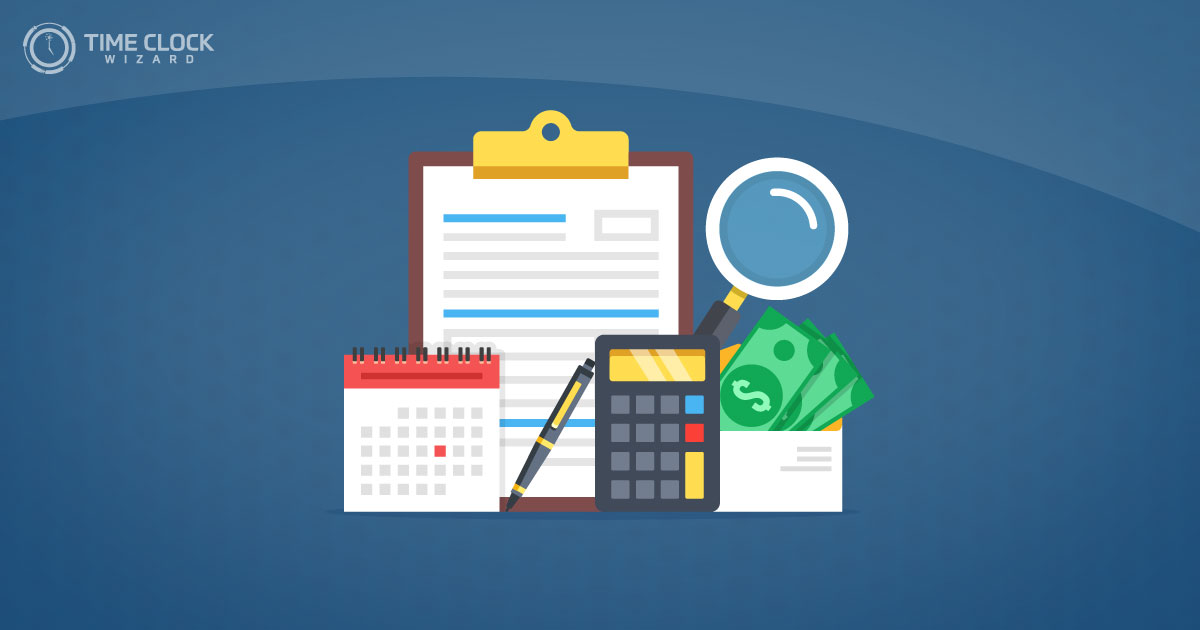
Are you trying to wrap your head around what Retro Pay is and how it affects your paycheck? Retro Pay, or retroactive pay, is a financial concept that might seem complicated at first but is essential for anyone in the workforce to understand. It’s all about fairness and making sure every employee gets what they rightfully earned.
In this article, we’ll break down the nuts and bolts of Retro Pay. From what triggers these payments to how they are calculated and finally, how they land in your bank account. Whether it’s due to a delayed raise, a promotion, or correcting payroll errors, understanding Retro Pay is crucial. 🤑 Why should you care? Because it could mean extra money that you might have been owed for your hard work!
Exploring Retro Pay: Definition and Basic Concepts
Have you ever received a paycheck that seemed a bit off, only to be compensated later with an additional amount? This adjustment is known as Retro Pay, a financial remedy applied when pay has been calculated incorrectly in previous periods. Essentially, Retro Pay serves as a correction to ensure employees receive fair compensation for their work.
But what exactly constitutes Retro Pay, and why is it necessary? It’s a fundamental concept in payroll management where any shortfall in an employee’s pay due to rate increases, missed overtime, or errors in salary calculations is rectified. The adjustment appears as a separate entry in your pay stub, distinct from your regular salary, which can raise questions for the unfamiliar.
- Understanding how pay adjustments are calculated
- Identifying the reasons behind such payments
- Recognizing its impact on overall earnings
Dealing with Retro Pay can often be a confusing experience. Has this ever made you wonder how it reflects on your financial records? Or perhaps how it affects your taxes at the end of the fiscal year? Let’s dive deeper into the basic concepts and distinctions that define Retro Pay, paving the way towards clearer understanding and expectations.

Calculating Retro Pay: Step-by-Step Guide for Employees
Calculating Retro Pay might sound daunting, but with a clear, step-by-step guide, it’s straightforward! Let’s break down the process, ensuring you navigate through this smoothly. After all, making sure you’re compensated correctly is key. 🙌
Step 1: Identify the Period of Incorrect Payment
The first step in calculating Retro Pay is to determine when the incorrect payments occurred. Review your previous pay stubs; can you spot any discrepancies from the expected amount? This step sets the foundation for the entire process.
Step 2: Understand the Rate of Pay Owed
Next, clarify the rate of pay that should have been applied. Was there a raise or adjustment in your wage that wasn’t reflected? Multiply the correct rate of pay by the hours worked during the relevant period.
Step 3: Calculate the Compensation
Now for the math—subtract what you were actually paid from what you should have been paid. This difference is your Retro Pay. Ensure accuracy to avoid further discrepancies. This figure is crucial, isn’t it?
Step 4: Verification and Inquiry
Once calculated, verify these figures with your HR department. Open communication helps correct errors efficiently and improves transparency in pay processes.
Common Reasons for Retro Pay Adjustments in Payroll
When it comes to adjusting payroll, retro pay can often appear as a puzzling concept, but it’s an integral part of ensuring employees receive fair compensation for their work. Have you ever wondered why these adjustments are made? Understanding the common reasons for retro pay adjustments is crucial, not only for employees but also for employers looking to maintain transparency and compliance in payroll practices.
One of the primary triggers for retro pay adjustments is the correction of payroll errors. Errors can stem from misclassification of employees, incorrect wage rates, or even clerical mistakes in data entry. It’s important to catch these discrepancies early to prevent a snowball effect on an employee’s earnings, which can complicate matters further. Isn’t it better to rectify an error sooner rather than let it linger for months?
Another prevalent reason involves delayed or updated salary increases. Sometimes, an employee’s raise might go into effect mid-pay cycle, or perhaps administrative delays push back the application of this new wage rate. When this happens, retro pay adjusts the salary differences, ensuring that employees receive the amount they’re entitled to from the correct effective date.
Furthermore, retroactive payments are also essential when there are changes to employment terms that have a backdated effect, such as union agreements or contractual changes. These adjustments ensure that all terms of employment are honored from the intended start date, cementing the trust between employers and employees.

Legal Considerations and Rights Surrounding Retro Pay
Navigating the realm of Retro Pay isn’t just about understanding how it’s calculated; it’s also crucial to grasp the legal landscapes that govern its application. Are you aware of your rights when it comes to receiving Retro Pay? It’s vital for both employees and employers to know these details to ensure fair and lawful treatment.
In the United States, for example, the Department of Labor oversees that all retroactive wages comply with the Fair Labor Standards Act (FLSA). This means any Retro Pay owed must still adhere to minimum wage laws and overtime payments. Failure to comply can lead to significant legal consequences for employers. Isn’t it reassuring to know that there’s a mechanism in place to protect your earnings?
Moreover, specific state laws might amplify these protections. For instance, some states have stringent penalties for late payments, which include not only the amount owed but also penalties and interest. This not only underscores the need for employers to remain vigilant about their payroll practices but also provides a layer of security for employees.
So, if you find yourself in a situation where Retro Pay is due, remember to verify the calculations and the timelines within which the payments are made. Know your rights, and don’t hesitate to reach out for legal advice if something doesn’t seem right. After all, being informed is your best defense! 🌟
Best Practices for Employers Managing Retro Pay Issues
Handling retro pay can be a complex task for employers, especially because it involves adjusting payroll errors from the past. But don’t worry, managing these issues efficiently is very achievable with the right approach! Are you ready to establish best practices that ensure fairness and compliance? Let’s delve into how to manage retro pay effectively.
Establish Clear Communication
First and foremost, clear and open communication is crucial. Informing your employees about the retro pay adjustment as soon as possible helps to maintain transparency and trust. Why not maintain an open door policy for any questions they might have? This approach not only eases concerns but also fosters a positive work environment.
Detailed Record Keeping
Meticulous record keeping is essential. Ensuring that all payment records are accurate and up-to-date aids in the easy identification of discrepancies. Has there been enough emphasis on the importance of this practice in your organization?
Regular Payroll Audits
Conducting regular payroll audits can preempt many potential issues with retro pay. By regularly reviewing payroll, you can catch errors before they balloon into larger financial issues. It’s all about being proactive rather than reactive!
Adhere to Legal Standards
Navigating the legal intricacies of retro pay is vital. Familiarize yourself with local labor laws to ensure compliance and avoid legal pitfalls. How confident are you that your practices are up-to-date with current legislation?
How Retro Pay Affects Taxation and Financial Planning
When it comes to understanding the impact of Retro Pay on taxation and financial planning, things can get a bit tricky! Ever asked yourself how these past payments affect your current financial state? Retro Pay, being a compensation for work previously done, can significantly alter how you calculate your taxes and plan your finances for the year.
Firstly, the influx of Retro Pay can bump your income into a higher tax bracket, potentially increasing your tax liability. It’s essential to consider this when planning your tax payments or budgeting for the year. Have you ever considered adjusting your tax withholding to accommodate this extra income? 🤔 It’s a strategy many find useful.
Financial Planning with Retro Pay
On the financial planning side, Retro Pay creates an opportunity to boost your savings or invest the sudden surplus wisely. Maybe it’s the perfect chance to max out your IRA contributions or tackle some of that high-interest debt. However, without proper planning, this unexpected money can easily be squandered.
- Review and possibly adjust tax withholdings
- Invest in retirement accounts
- Pay down debts
- Save for unforeseen expenses
Final Thoughts: Understanding Retro Pay: What Is It and How Does It Work?
We’ve demystified Retro Pay, from its essential definition right through to its taxation implications. Whether you are an employee receiving this type of pay adjustment or an employer tasked with its administration, understanding Retro Pay is crucial and beneficial. It’s exciting to discover how resolving payroll discrepancies can lead to better financial planning and more accurate pay for everyone involved. Isn’t it reassuring to know the ropes about Retro Pay now?
Feeling more confident about dealing with Retro Pay adjustments? By staying informed and utilizing the best practices discussed, you can handle Retro Pay with competence and ease. Here’s to fewer payroll discrepancies and more seamless financial operations! 🎉 Remember–knowledge is power, especially when it comes to handling money matters effectively. Thanks for reading, and here’s to managing your Retro Pay like a pro!





